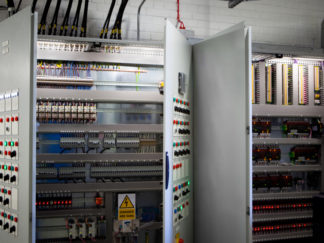Description
Table of Contents:
Introduction 6
Overview of U.S. Investor-Owned Utilities 6
Power Generation 7
Power Transmission 8
Power Distribution 8
Operational Technology 8
Control Systems 8
Substation Automation 9
Protection and Control 9
Distribution Automation 9
EMS/SCADA/DMS/OMS 10
1. Which of these systems does your company use? (Check all that apply) 10
2. What vendors do you use for the systems you have? 10
3. Do you plan to add any new/replacement or upgraded/retrofitted systems by 2019? 10
4. What is your planned estimated budget range from 2017 to Year End 2019 for EMS? 10
5. What is your planned estimated budget range from 2017 to Year End 2019 for SCADA? 11
6. What is your planned estimated budget range from 2017 to Year End 2019 for DMS/ADMS and/or OMS? 11
7. Do you have an Advanced DMS (ADMS)? (i.e. does it provide SCADA, DMS and OMS together in one user interface) 11
8. If you have an ADMS, does the SCADA functionality and network modeling include Distributed Energy Resources? 11
9. What applications do you use as part of your DMS or ADMS? 12
10. Does your utility currently have real-time linkages between SCADA and GIS or OMS? 12
11. Is the support group for EMS/SCADA/DMS part of a corporate IT department or managed by the line of business? 12
12. Has your utility converged SCADA/DMS and OMS functions? 12
13. What types of networks do you use for communication from the substation to the external EMS/SCADA/DMS host/network? 13
14. For communication from the substation to the external EMS/SCADA/DMS host/network, do you use an “in-house” network or rely on a commercial carrier network? 13
15. Current and planned use of communication protocol(s) within the substation, and from the substation to external EMS/SCADA/DMS host/network. 13
16. Reasons for NOT using or planning to use IEC61850 13
17. Communications method(s) used for connecting SCADA substations 14
18. External assistance or third-party services needed for control center activities 14
19. Number of currently installed RTUs, PLCs, substation platforms, etc. on EMS/SCADA/DMS 14
20. Number of RTUs, PLCs, substation platforms, etc. on EMS/SCADA/DMS planned for installation from 2017-2019 14
21. Use of analytics 15
22. Agree or disagree 15
23. Open-ended comments regarding the statements/topics in the previous “agree/disagree” question. 16
24. For which of the following applications does your utility use synchrophasors? 16
25. What are the Operating System preferences for the platforms on your system? 16
26. Latest technologies incorporated into EMS/SCADA/DMS platforms 16
27. With experienced personnel leaving the workforce due to retirements, how is your utility able to maintain a “Qualified Support Staff” for EMS/SCADA systems? 17
28. How are distribution circuit designs captured and transferred? 18
29. How are distribution circuit designs updated? 18
30. What standard is used to update distribution circuit designs? 18
31. What system is master? 18
32. How are distribution circuit designs captured and transferred? 19
33. When distribution circuit designs are captured and transferred, how are they updated? 19
34. When distribution circuit designs are captured and transferred, what standard is used? 19
35. When distribution circuit designs are captured and transferred, which system is master? 19
Protective Relays 20
1. Number of Protective Relay Systems to be Purchased: 2016-2018 20
2. Average % of microprocessor relays among installed base 20
3a. Estimated Annual Budget Allocation for Protective Relay Hardware 20
3b. Estimated Annual Budget Allocation for Protective Relay Hardware 20
4. Approaches used for operating WAN remote access to relays 21
5. Relay Protocols Used for SCADA 21
6. Relay Protocols Used for Substation Automation 21
7. Relay Protocols Used for Controlling Actions Issued Externally To or Through the Relay 21
8. Relay Protocols Used For Communications-Assisted Protection and/or Automation 21
9. Relay Protocols Used for Engineering Access 22
10. Ranking of “top three” relay manufacturers from 1-3 22
11 & 12. Types of Relay Redundancy Schemes CURRENTY USED for microprocessor-based relaying terminals 22
13. Uses of IEC 61850 23
14. Use of IEC-61850 Process Bus (Analog values) or Goose Messages (Digital values) among 61850 users 23
15. Features of IEC 61850 to be used in new projects 23
16. Planned level of implementation of IEC 61850 in substations by YE 2018 23
17. Use of PMUs 23
18. Where PMUs are used on the system 24
19. Time Synchronization Methods CURRENTLY USED for PMUs by location 24
20. Time Synchronization Methods PLANNED for PMUs by location 24
21. Please indicate your level of agreement with the following statements: 25
22. Number of Relays Currently Installed, and Number of Relays >15 Years 25
23. Percent of installed relays that have been in service more than 15 years 25
24. Percentage of relays to be replaced in next 3 years 26
25a. Use of CT sensors instead of traditional CT to eliminate saturation concerns 26
25b. Use of VT sensors instead of traditional Voltage Transformers 26
26. Ethernet topologies used for redundancy 26
27. Management of IT and OT Ethernet Networks separately 26
28. If so, what department in your organization is responsible for the design, performance, and maintenance of your OT networks? 27
29. Who in your organization monitors, diagnoses, and troubleshoots OT Ethernet networks to verify their real time performance and identify and correct communications systems misoperations? 27
30. Who in your organization detects, alerts, reports, and records communications systems misoperations? 27
31. Demarcation between physical IT and OT networks 28
32. For reliability & availability of Ethernet OT networks, which methods do you use to avoid a single point of failure? 28
33/34. Maximum signaling times 28
Substation Automation 29
1. “potential obstacles” to implementing substation automation and integration “1 = doesn’t stand in our way” to “5 = formidable obstacle.” 29
2a. External spending estimates for new and retrofit substation automation and integration programs between 2017 and 2020 – NEW SUBSTATIONS 31
2b. External spending estimates for new and retrofit substation automation and integration programs between 2017 and 2020 – RETROFITTED SUBSTATIONS 31
3. Number of substations in operation, to be retrofitted, planned to be built, and levels of automation 31
3. Percent of substations in operation, to be retrofitted, and planned to be built by their levels of automation 31
4. Are you currently using or planning to implement control logic in your RTUs? 32
5. If you are either currently using or planning to use control logic in RTUs, how is it used? 32
6. Are you planning to replace your legacy hardwired I/O? 32
7. If you are planning to replace your hardwired I/O, what will you replace it with? 32
8. Reasons for replacing legacy hardwired I/O 32
9. Need for Analog Outputs 32
10. Substation Protocols in use and planned for use by year end 2020 33
11. Encryption of substation communication data 33
12. What are your alternate methods of communication with the remote site in the event of loss of the routine communications pathways? 33
13. Substation Ethernet LAN architectures in use and planned for use by YE 2020 34
14. Routable paths to end devices in 2017 34
15. Communication architectures used within substation and for communicating to the substation 34
16. Types of communications links used 34
17. How primary information processing tasks “inside the fence” are handled 35
18. Do you have (or plan to have) a Vendor Security Certification Program? 35
19. If you currently have/plan to have a Vendor Security Certification Program, what does it involve? 35
20. Applications for substation-based computing platforms 35
21. External assistance needed for substation automation and integration related activities 36
22. Please indicate your utility’s preferred vendors for each equipment type. 36
Distribution Automation 38
1. Total number of distribution feeders reported by utilities answering the survey 38
2. Average Percent of feeders with SCADA controlled sectionalizing switches that are manual only, semi-automatic (upstream restoration is automatic and downstream restoration is manual), fully automatic (upstream and downstream restoration are both automatic) 38
3. Approximately what percentage of all your feeders have Fault Detection Isolation Restoration (FDIR)/Fault Location Isolation Service Restoration (FLISR)? (Average) 38
4. Average percent of feeders equipped with VVC, VVO or CVR 38
5. What is driving your decision for VVO? Check all that apply. 38
6. Where are the controls located for FDIR/FLISR on your distribution system? 38
7. In the future, where do you anticipate the logic to be located for FDIR/FLISR? 39
8. Where are the controls located for Volt/Var control on your distribution system? 39
9. In the future, where do you anticipate the logic to be located for Volt/Var control ? 39
10. Does your utility use automatic fault sensing devices (hot line status, fault indicators) in your feeder design? 39
11. If you do use automatic fault sensing, do you utilize the status of the communicating automatic fault sensing devices in your distribution automation applications? 39
12. Have you integrated any communication/controls for distributed generation into your DA system architecture? 39
13. Are you considering a trial deployment to manage distributed energy resources (e.g. inverters, energy storage, EV chargers, etc.) within the DA system? 40
14. Does your utility integrate sensing and/or Volt/Var control at the LV side of the distribution transformer within the DA system? 40
15. Does your utility plan to use sensing and/or Volt/Var control at the LV side of the distribution transformer to support any of the following applications? 40
16. What other DA applications use the same telecommunications infrastructure being used by feeder automation? (check all that apply) 40
17. How are you notified of a feeder main fault event? 40
18. Does your utility run distributed software applications (like S&C Intelliteam II, L+G Grid Stream; SCADA center product suite, Cooper/Yukon Feeder Automation, G&W/Survalent Lazer Automation) 41
19. Do you use a centralized (control center based) tool for communication network management and security management? 41
20. Please check any of the following functions you would like to have integrated into a communications/security management tool for MV Feeder Device management (like recloser controller, capacitor bank controllers, remote controlled switch) 41
21. Do you currently use (or plan to use) encryption on your communications network for distribution automation? 41
22. Do you plan to upgrade the existing Feeder Automation network to a newer, wireless technology that allows for features like higher bandwidth, IP enabled radios (i.e. 4G, LTE or WIMAX) by the end of 2020? 41
23. If you plan on upgrading your Feeder Automaton network, which wireless technology do you plan to use? 42
24. Three-year total budget for DA projects from 2018-2020 as indicated by the survey sample 42
25. Average % of DA budget 42
26. Allocation of DA expenditures by category 42
27. Do you currently use (or plan to use) bi-directional regulators on your system? 42
28. Do you currently use/plan to use bi-directional reclosers on your system? 42
29. Do you currently use (or plan to use) dynamic protection (real time modification of protection settings) on your system? 42
List of IOUs Surveyed 43





 summary reviews and highlights from completed studies
summary reviews and highlights from completed studies

